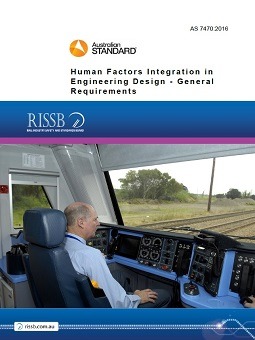This Standard has been prepared to support Human Factors Integration (HFI) into the engineering design process within the Australian Rail Industry.
This standard describes the requirements for organisations conducting or procuring engineering design activities, services or products to —
- incorporate Human Factors within their engineering design processes,
- ensure their products comply with the generic Human Factors requirements set out in this standard, and
- use the HFI process to identify the specific Human Factors requirements of the system or asset being designed, procured or modified.
The aim of the requirements specified in this document is to optimise overall system performance through the systematic consideration of human capabilities and limitations as inputs to an iterative design process.
Adequate integration of Human Factors in all phases of a system’s development lifecycle ensures its safety, performance and fitness for purpose.
For an operational system to deliver the expected benefits, it is essential that the human interactions with the system and system elements are well designed through the application of established HF principles, knowledge and methods. The process for achieving this is HFI.
The aim of the HFI process is to identify then mitigate and prevent Human Factors related risk and ensure that human-system interactions are optimised for system performance and safety. Incorporating HFI into the engineering design process also facilitates a high level of system acceptance amongst end users.
A supplier of engineered assets to the Australian rail industry is responsible for ensuring that the assets and systems they provide are safe to operate and maintain, and that all safety risks have either been eliminated or managed so far as is reasonably practicable (SFAIRP). Supporting evidence, demonstrating HFI in safety risk management activities, will provide an important contribution to an overall safety and operational assurance argument for most assets.
The benefits of considering HF in the design process are not limited to safety. Equally valuable benefits can be gained regarding the operation and maintenance of the system. These include but are not limited to —
- minimising errors,
- improving effectiveness,
- improved user comfort, and
- increased system acceptance.
To achieve these benefits, it is important to take HF into account early, starting with feasibility, solution optioneering, conceptualising, and throughout the full design process.



